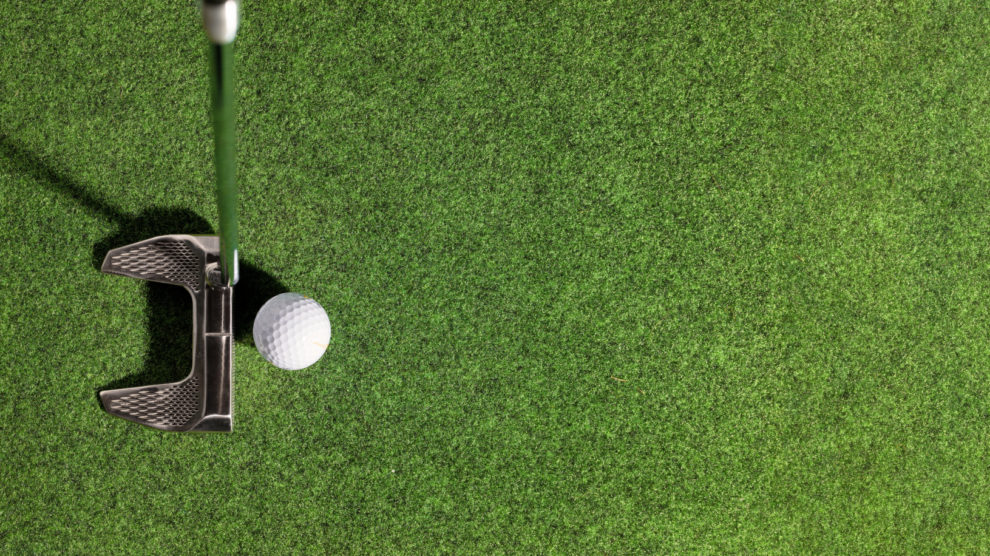When Bryson DeChambeau caused a deserved stir by petulantly-ripping the clubmaker of his driver after a suspect opening round at the year's Open Championship, the polarizing mass of muscle and mouth may well have unintentionally tilted his flatcap toward a peek at the equipment game's near future.
Of irony, perhaps, is that the target of DeChambeau's slight, Cobra Golf, has long tracked among the leading clubmakers when it comes to experimenting with the technical and manufacturing possibilities of 3D printing.
While such technology, as it pertains to clubheads, has been in play from a research and development vantage for more than a decade (namely for putters), 3D printing's burgeoning abilities to offer more nimble and iterating possibilities from a design and additive manufacturing standpoint could prove a golf game-changer.
And the future is happening in real-time.
Burlington, Mass.-based Desktop Metal, which has worked with Callaway Golf in recent years, scorecards its 3D-printed golf clubs among a portfolio of hundreds of printing and material projects. With the company's Shop System – the world's first metal binder jetting system designed to bring metal 3D printing to machine shops – the process can now move 100 times faster than legacy metal 3D-printing.
As that pertains to the beefs of DeChambeau -- swings speeds and spin rates aside – the lengthy process of designing, customizing, managing weight distribution and manufacturing clubs to creation could soon move markedly faster.
From Desktop's learned purview, 3D-printing provides, among other benefits, more malleability than the three primary clubmaking technologies used today: casting, forging and milling.

"With this process, you get a lot more geometric flexibility by building up the parts layer-by-layer," says Arjun Aggarwal, chief product officer at Desktop Metal. "There are now technologies out there – including some of the solutions that we're offering – that bring the costs of manufacturing down to the point where it's viable to do mediums-runs or even full-on runs."
Speaking specifically to the technology for metal 3D printing, Aggarwal details: "We've got new systems which use what's called 'binder jet 3D printing,' and the whole idea here is that you have a practically empty box to start with, and with very thin, 50-100 micron (one millionth of a meter) layers, you're basically spreading really thin layers of metal powder. And then you go over that layer of metal powder with a print head, something not dissimilar to your 2D inkjet print head, but a very industrial version. With this print head, it's basically a composite, you're gluing these powder particles together in the shape of what you're trying to print."
Employing the same underlying metals used in other clubmaking methods (powder metallurgy is not itself a new technique), the process is repeated, over and over again, before the head is moved to a furnace, where powder particles, together with a binder, form a solid.
Along with reduction of material waste and a less pollutive creation process, Aggarwal believes that 3D-printing of clubs can provide both creators and customers the ability to be more nimble in customization.
Additionally, Aggarwal says, 3D-printing can offer OEMs (original equipment manufacturers) the benefit of moving faster with R&D and design, along with eventual cost savings in supply chain for mid-sized or even full-on product runs.
"It all starts with the fact that there's no tool required for 3D-printing, whereas with metal injection molding or casting, you need a tool to basically pour the metal or inject the metal into, and that tool often takes weeks or even months to iterate on," Aggarwal continues.
"With 3D-printing, you can print one part today and an entirely different part tomorrow. Or you can print 10 different designs all at once."
Adding that manufacturers can also move on more quickly from designs which may prove duds, Aggarwal believes that the technology can be further beneficial from the vantages of both aesthetics and performance.
"I think 3D-printing is the next evolution of moving around weight," he says. "There's some additional flexibility from a geometry perspective, where not only do you have a solid structure that's weight-distributed to the club's outer edges and things like lattice behind that sweet spot, but you can maintain that high-level of inertia by redistributing weight in a more complex and intricate manner. Whether it's a putter or an iron."
Whatever the club, having more personalized choice in design would appear to behoove the player.
"From a user perspective, having more options, more variations is big," says Aggarwal. "The long-term vision is custom manufacturing, so having a club made for one person is certainly a possibility. I won't say that the economics may be there for the manufacturers, as the logistics can be complex, but from the player side it is something that could be accommodated."
And while DeChambeau, in his driver "sucks" cry, may have unknowingly touched a vibrant nerve in the revolution of club creation, he may well be far from the first with a fresh set up 3D-printed sticks in his bag.
"It's still a newer technology, especially at scale, and I think there's a lot of room to explore if this is a technology to be introduced to the masses, with beginners seeking more club forgiveness, before introducing it to the touring professionals. I think there's a lot of opportunity with the beginners," Aggarwal concludes. "I don't know if it's a technology which will take over the market, but I think 3D printing will prove another tool in the chest for the OEMs to produce clubs with more characteristics."

